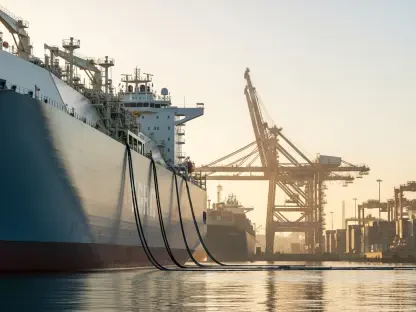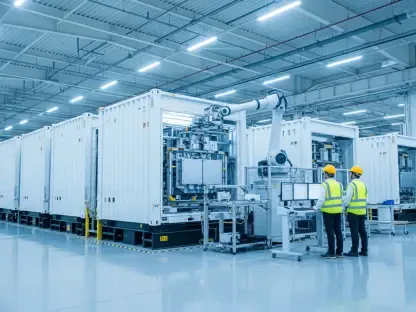In a defining moment for the maritime industry, the spotlight is on the U.S. Gulf Coast’s first marine liquefied natural gas (LNG) fuel facility. Amid stringent environmental regulations, this development signifies a critical move toward cleaner fuel solutions. By exploring market trends and projections, this analysis examines LNG’s impact on global shipping, considering sustainability agendas and economic implications within the industry.
Emerging Trends in Cleaner Maritime Fuels
The maritime industry is witnessing pivotal changes as global initiatives push for reduced carbon emissions. LNG is at the forefront, recognized for its lesser environmental impact compared to traditional heavy fuel oil. The newly operational Galveston LNG Bunker Port (GLBP) exemplifies this trend, offering infrastructure that supports the transition to LNG-powered vessels. As a joint venture between Pilot LNG and Seapath, GLBP’s strategic position in the Gulf region aids in meeting regulatory compliance while potentially altering standard maritime practices.
Examining LNG’s Role and Market Dynamics
Environmental and Economic Prospects of LNG
LNG presents compelling environmental benefits by significantly cutting sulfur emissions, nitrogen oxides, and particulate matter. Operational cost savings also make LNG an attractive option financially. Despite initial high production expenses, advancements in technology and scale are anticipated to drive cost efficiencies. These advantages position LNG as a feasible alternative that aligns with long-term sustainability goals, minimizing carbon footprints while optimizing operational expenditures.
Industry Challenges and Comparative Analysis
The market debates LNG’s efficacy due to potential methane slip during production. Nonetheless, innovations aimed at reducing methane leakage continue to emerge, promising enhanced environmental performance. Comparatively, hydrogen and biofuels also vie as sustainable contenders but face their own hurdles of production scalability and technological maturity. This comparison accentuates LNG’s current viability as a balanced option given existing infrastructure and regulatory frameworks.
Regional Considerations and Innovative Approaches
The U.S. Gulf Coast’s progression into LNG bunkering is an indicator of regional strengths, leveraging abundant natural gas resources and robust logistics networks. However, global adoption varies due to region-specific factors, including natural resource availability and regulatory landscapes. Lessons from the Gulf Coast experience, such as effective stakeholder collaboration and infrastructure development, provide valuable insights for other regions exploring LNG bunkering solutions.
Future Outlook and Strategic Forecasts
As emission regulations tighten, the maritime industry is likely to see increased adoption of LNG. Projections suggest accelerated investments in LNG infrastructure and technology solutions. While other clean technologies grow, LNG’s established presence offers stability amid ecosystem shifts, supporting the maritime sector’s environmental commitments. Industry predictions indicate LNG will remain integral to sustainable shipping strategies, coexisting with emerging technologies to fulfill global environmental objectives.
Strategic Recommendations for Industry Stakeholders
Market participants must understand LNG’s intricacies and adopt strategies to embrace its capabilities. Developing adaptable business models that include LNG and considering complementary technologies are crucial. Building networks with stakeholders and focusing on crew training align operational strategies with evolving regulations. Long-term planning that prioritizes sustainability and operational effectiveness ensures success in this dynamic landscape.
Reflecting on LNG’s Role in Maritime Transition
In conclusion, the establishment of the Galveston LNG Bunker Port marked a progressive shift toward embracing cleaner maritime fuels. While complexities surround LNG’s adoption, its potential advantages evidence substantial benefits to the industry. As the sector navigates ongoing environmental challenges, it becomes clear that continued innovation and strategic adaptation are paramount to maintaining industry viability in a rapidly changing world.









